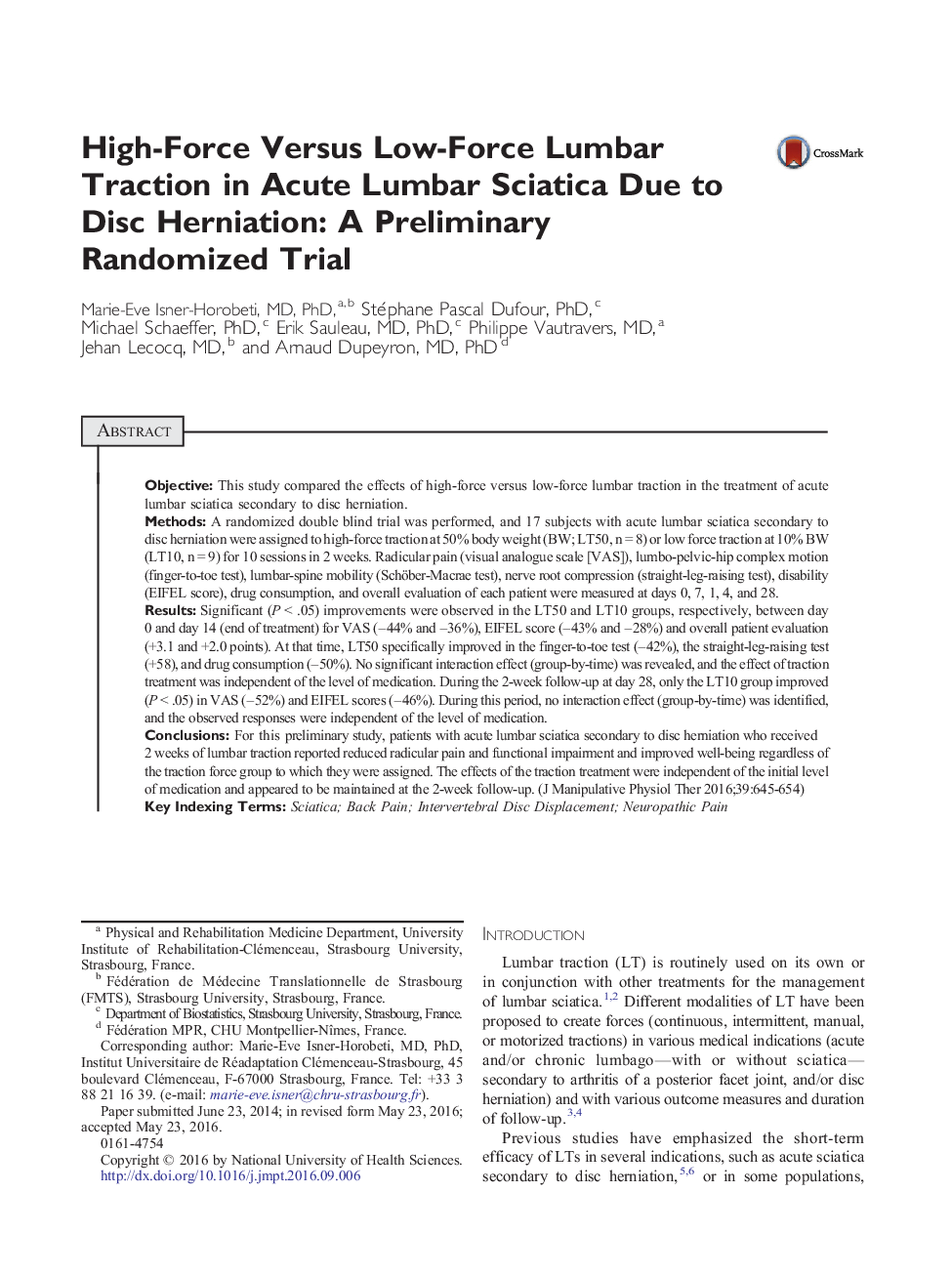| کد مقاله | کد نشریه | سال انتشار | مقاله انگلیسی | نسخه تمام متن |
|---|---|---|---|---|
| 5564177 | 1403501 | 2016 | 10 صفحه PDF | دانلود رایگان |
ObjectiveThis study compared the effects of high-force versus low-force lumbar traction in the treatment of acute lumbar sciatica secondary to disc herniation.MethodsA randomized double blind trial was performed, and 17 subjects with acute lumbar sciatica secondary to disc herniation were assigned to high-force traction at 50% body weight (BW; LT50, n = 8) or low force traction at 10% BW (LT10, n = 9) for 10 sessions in 2 weeks. Radicular pain (visual analogue scale [VAS]), lumbo-pelvic-hip complex motion (finger-to-toe test), lumbar-spine mobility (Schöber-Macrae test), nerve root compression (straight-leg-raising test), disability (EIFEL score), drug consumption, and overall evaluation of each patient were measured at days 0, 7, 1, 4, and 28.ResultsSignificant (P < .05) improvements were observed in the LT50 and LT10 groups, respectively, between day 0 and day 14 (end of treatment) for VAS (-44% and -36%), EIFEL score (-43% and -28%) and overall patient evaluation (+3.1 and +2.0 points). At that time, LT50 specifically improved in the finger-to-toe test (-42%), the straight-leg-raising test (+58), and drug consumption (-50%). No significant interaction effect (group-by-time) was revealed, and the effect of traction treatment was independent of the level of medication. During the 2-week follow-up at day 28, only the LT10 group improved (P < .05) in VAS (-52%) and EIFEL scores (-46%). During this period, no interaction effect (group-by-time) was identified, and the observed responses were independent of the level of medication.ConclusionsFor this preliminary study, patients with acute lumbar sciatica secondary to disc herniation who received 2 weeks of lumbar traction reported reduced radicular pain and functional impairment and improved well-being regardless of the traction force group to which they were assigned. The effects of the traction treatment were independent of the initial level of medication and appeared to be maintained at the 2-week follow-up.
Journal: Journal of Manipulative and Physiological Therapeutics - Volume 39, Issue 9, NovemberâDecember 2016, Pages 645-654
